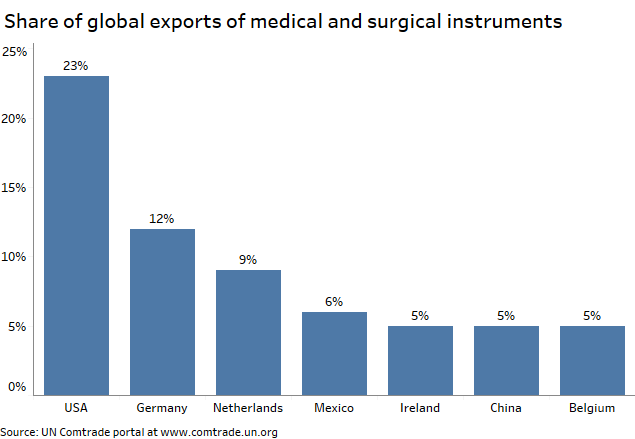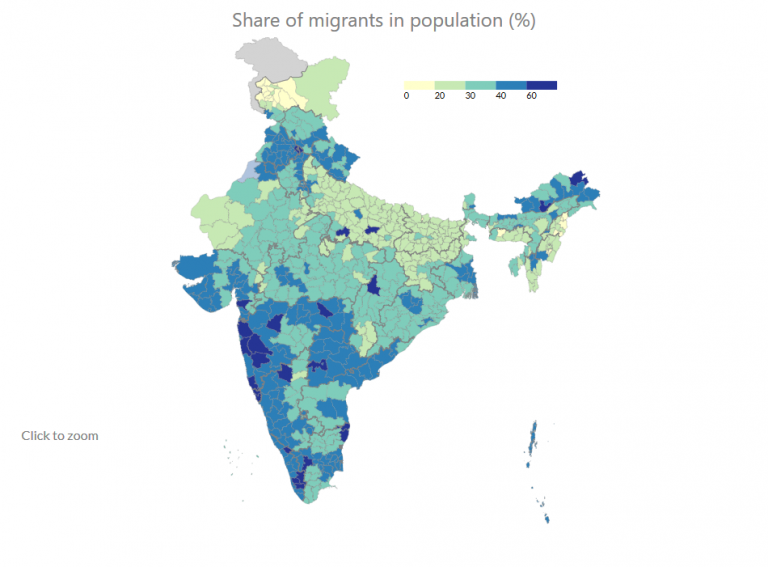This is the fifth edition of our newsletter. When we started out, the idea was to write on diverse subjects affecting businesses, organisations and individuals using publicly available data.
However, in these testing times, writing and focusing on anything else seems pointless. On Friday, USA crossed 100,000 cases. A friend, who’s a resident at Baystate Medical Center, sent out this message on our WhatsApp group.

Overwhelmed
That India has a shortage of hospital beds is well known. In Mint, my colleague Arjun estimated by when states in India will run out of beds to isolate and treat Covid-19 patients. Following the trajectory as on March 24th, when the piece was written, he estimated that 27 of the 36 states would run of out hospital beds by the end of May (even sooner, in an extreme scenario).
Availability of hospital beds is abysmally low in India, and an epidemic like the coronavirus will quickly overwhelm the fragile healthcare infrastructure of the country. 8.4% of all Covid-19 patients required critical care (share of deaths + critical cases in total cases). In the US, where the healthcare system is showing early signs of strains, this ratio is 5%, while Italy, where the system has already collapsed, stands at 15%.
With Covid-19 filling up hospital beds everywhere and disrupting supply global supply chains, diagnostic and other medical equipment are in short supply. But before it all went down, here’s how the market looked. At $28.5 billion, USA dominated the share of global exports of medical instruments and appliances.

The other race
As researchers race to find a vaccine to coronavirus, there’s another race that is equally, if not more important. The race to manufacture accessible ventilators locally.
One of the most worrying consequences of covid-19 is the way it attacks the lungs of those infected. This means patients will require a ventilator to help them breathe until their lungs recover. The growing number of patients critically sick is fueling demand for ventilators to at least ten times of what’s available at hospitals around the world.
Appliances like ventilators are manufactured by a handful of companies and countries around the globe, while the other majority relies on imports. Some of the largest manufacturers are Becton Dickinson (USA), Philips (Netherlands), Hamilton Medical (USA), Fisher and Paykel (New Zealand), Draeger (Germany), Medtronic (Ireland), GE (USA) and Mindray (China). Amidst the growing demand, manufacturers are receiving orders for ventilators that they can’t fulfil. Urged on by worried governments, ventilator manufacturers are working flat out and forming partnerships with carmakers, aerospace firms and others to boost output as fast as possible. To compel General Motors to make ventilators needed to treat coronavirus patients, President Trump triggered the federal government’s wartime powers.
Given USA’s dominance in the manufacture and export of ventilators (it accounts for 28% of all global ventilator exports) and domestic shortage, countries will need to figure out their own ways to ramp up production or place orders elsewhere.
According to an estimate by Brookings, India would need 110,000 to 120,000 ventilators by May. It has 40,000, with most in use. With passenger flights cancelled, and cargo clearances having slowed down because of the lockdown, Indian manufacturers are finding it tough to import essential parts needed.
Based on the data from 8-digit HS code (Harmonized System) of ventilators and its parts, India relied on China for import of ventilators. However, over the years, the share of imports from China has decreased, as the overall value of imports of ventilator and its parts has also decreased. One reason behind this could be self reliance on Indian manufacturers over the years. Like the US, Indian automobile manufacturers are joining hands with ventilator manufacturers to expand and expedite production.

In other news
On Friday, thousands of migrant workers thronged the various bus depots of Delhi to get back to their towns and villages for the lockdown period. Despite repeated government requests, the crowds kept swelling and the UP government finally sent out buses to get these migrants back home. Given the migrant composition of Delhi and close proximity of the migrants’ home states, the government should have foreseen this exodus and provided them better. Last year, we wrote where migrants move in search of work and why they throng Delhi and Mumbai for work.
Last weekend, sport resumed. Sort of. In a normal world, March 22 was when the second Formula 1 race of this season would have been held, in Bahrain. It was cancelled due to Covid-19. But that day saw the start of a virtual race series to fill the void left by F1. It had one thing that F1 has aspired—and failed—for the longest time: read full story here
[activecampaign form=51]



Recent research points that high pressured ventilators hurt patients. So low pressure oxygen machines might be sufficient for most cases. Basically oxygen tubes and hand operated machines that cost sub 7500 which everybody can own at home might become the new norm.